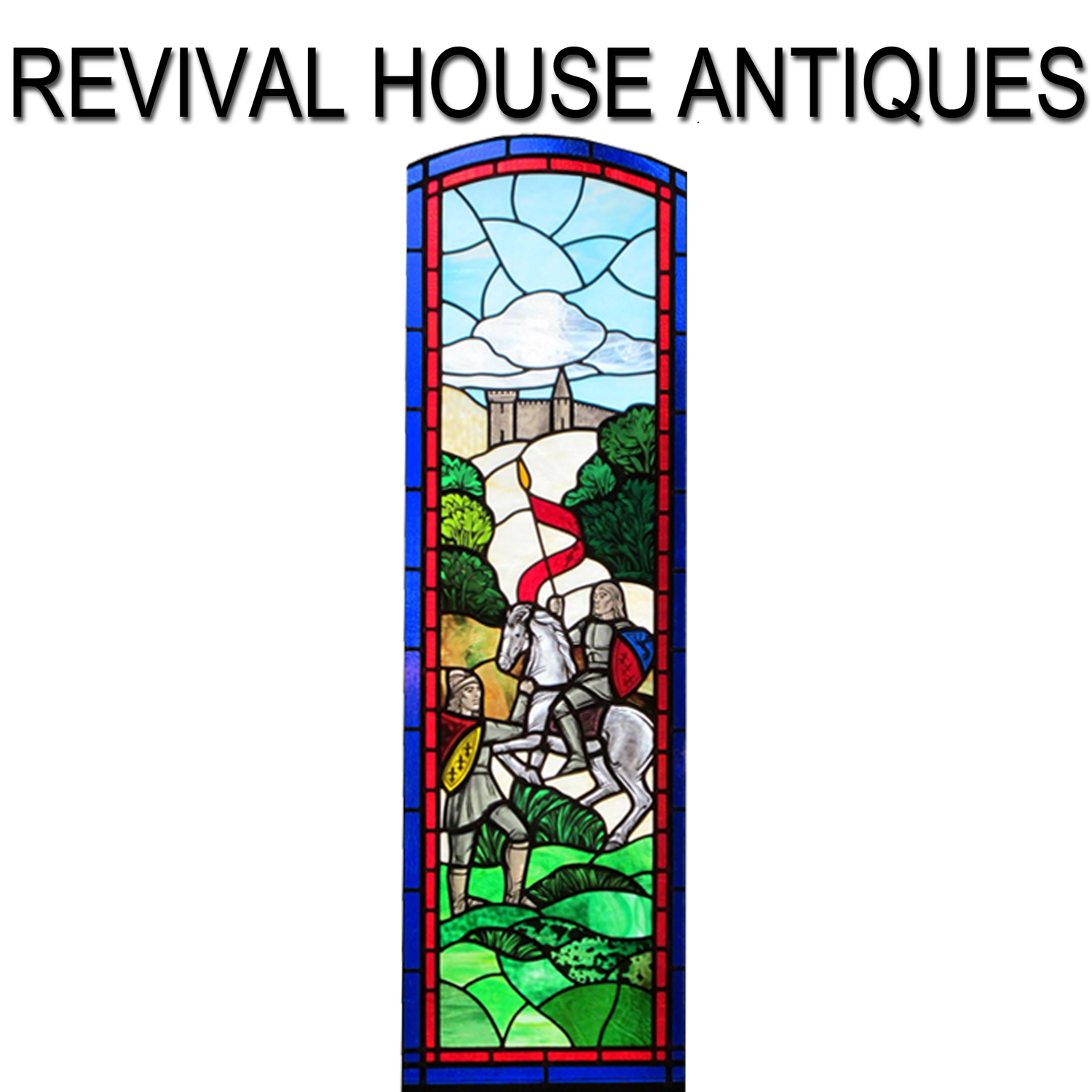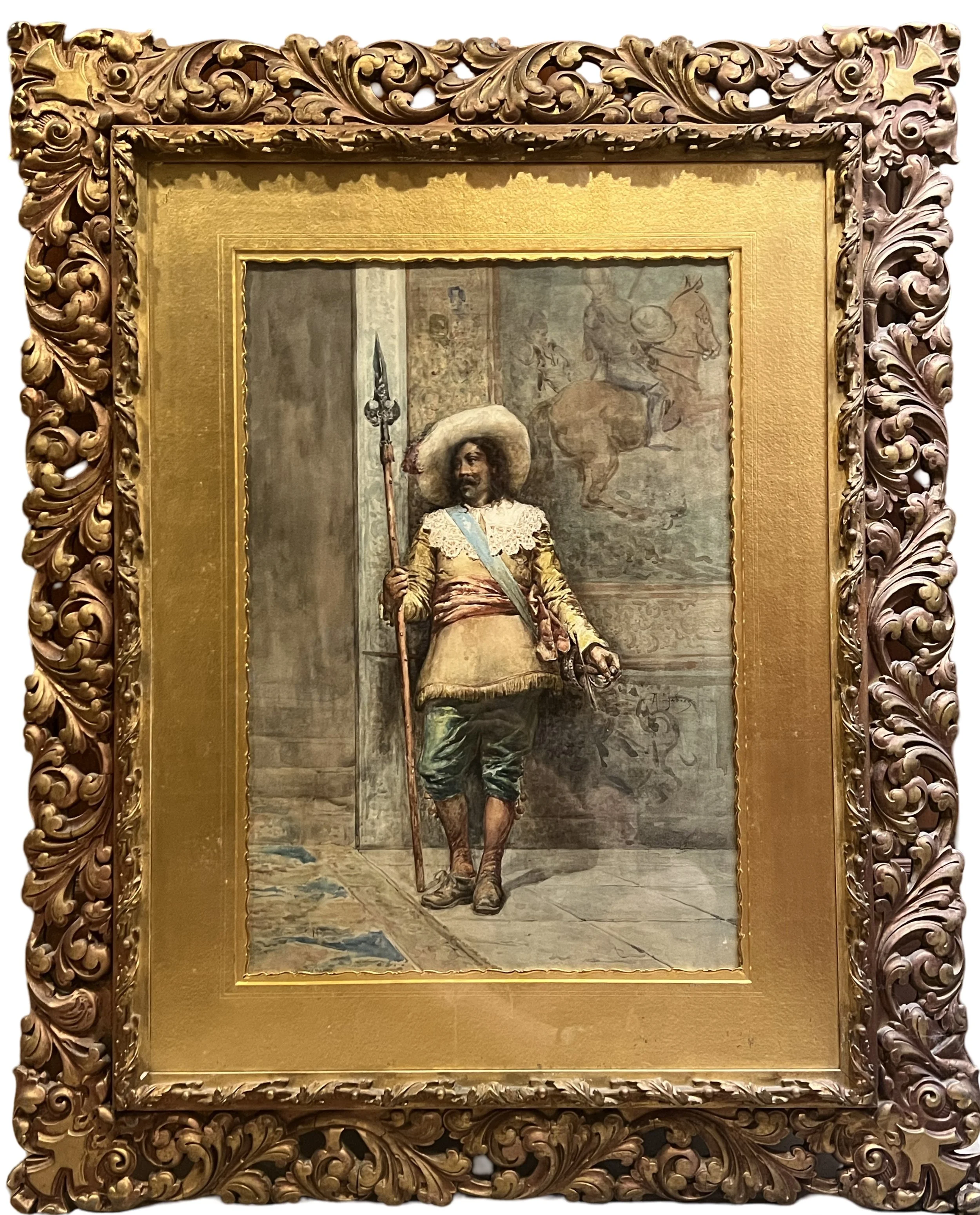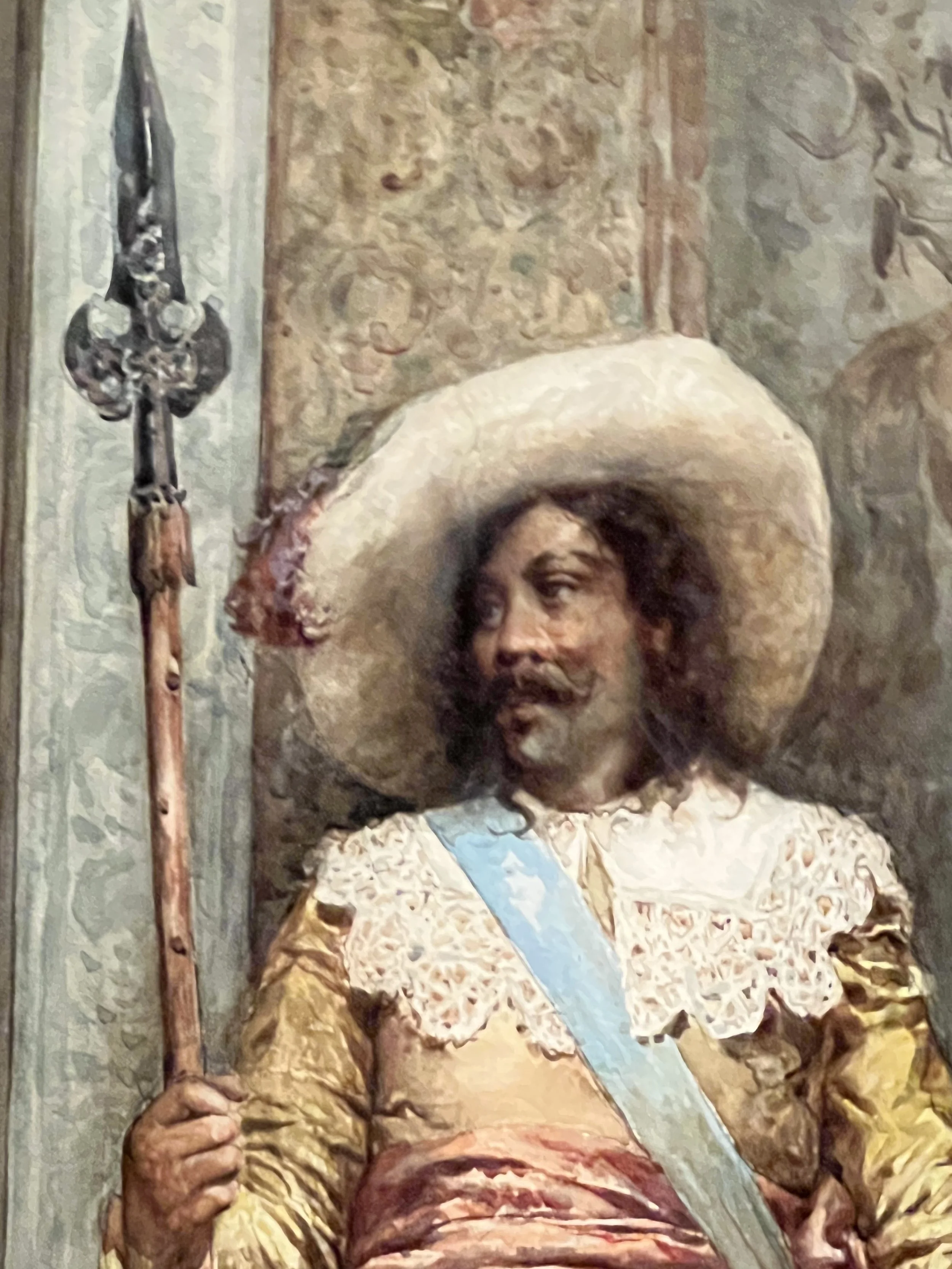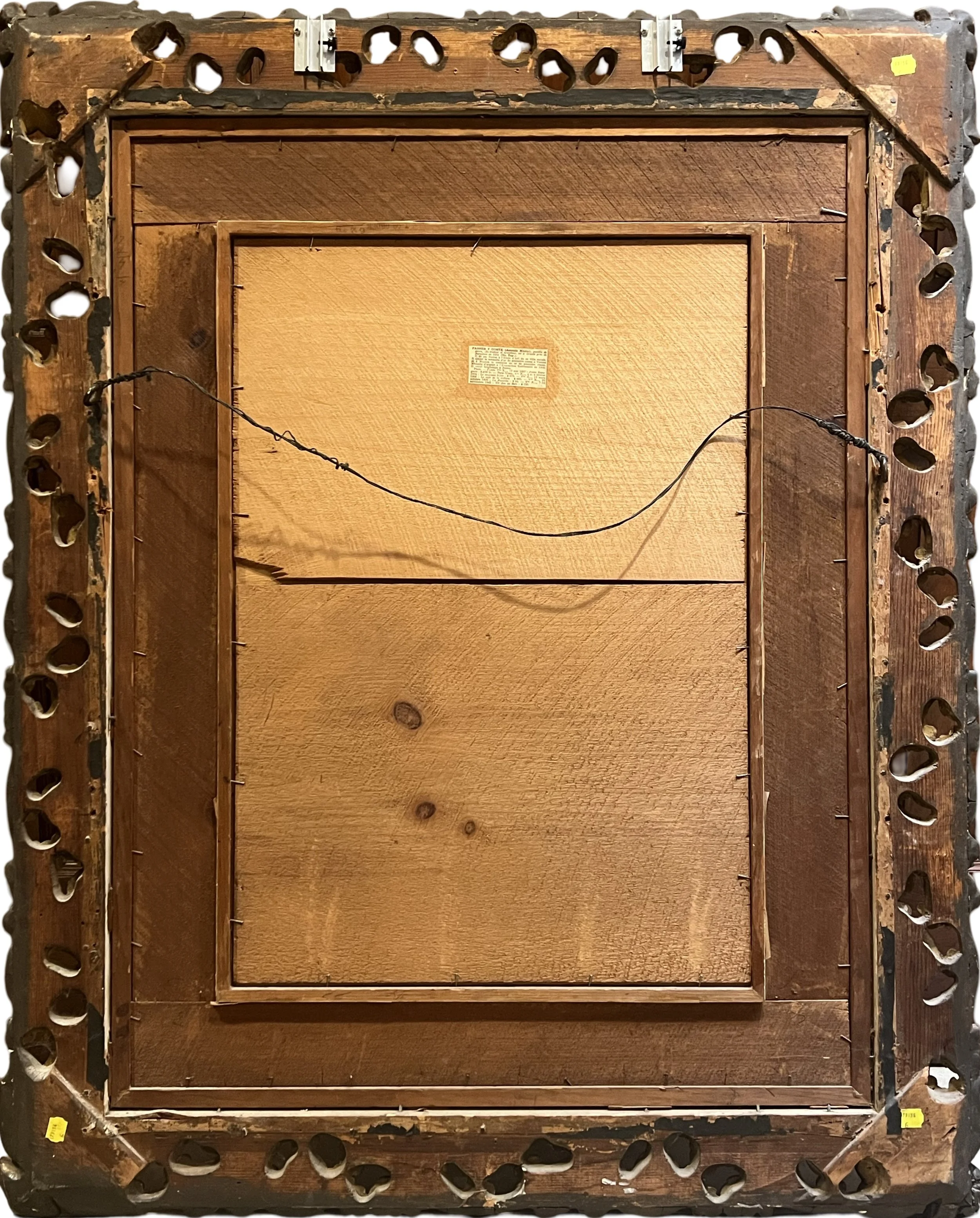Antonio Maria Fabres y Costa, Watercolor painting, Orientalist Palace Guard before a Tapestry
Antonio Maria Fabres y Costa, Watercolor painting, Orientalist Palace Guard before a Tapestry
A watercolor and gouache painting on paper by Spanish artist Antonio Maria Fabres y Costa (1854-1938) depicting an Orientalist Palace Guard before a Tapestry. The gentleman in the painting stands guard, holding a partisan in his right hand and with his left hand on his sword. The subject appears to be North-African and wears a wide-brimmed hat and lace collar over his tunic. He has green breeches and a rose colored sash with orange stockings. Behind him is a large Verdure style tapestry with a soldier on a rearing horse. The painting is signed by the artist in the lower right quadrant “A Fabres.” It has not been examined out of the frame.
About the artist from Christie’s: Born in Barcelona into a family of artists, Fabrés originally devoted his efforts to the art of sculpture. After winning a scholarship in 1875 to study in Rome, he was soon impressed by the success of several Spanish artists working in the city and particularly by the painting of Mariano Fortuny. Like Fortuny, the artist subsequently abandoned his chisel for a brush. Fabrés was captured by the exoticism of Fortuny’s orientalist subjects and established a style which was to dominate his oeuvre during his twelve year stay in Rome.
In 1892, the artist settled in Paris, where he quickly became part of a circle of Spanish painters who had moved there. He found great commercial success throughout Europe, thanks to the support of the French dealer Goupil, who presented the artist as the successor of Fortuny. In 1884 one work was selected for the inaugural exhibition of the Sala Parés. For Fabrés it meant the triumphant return to his native Barcelona.
While the figures and the costumes of Fabrés’ oriental compositions are based on his knowledge of the paintings of Fortuny, he also drew on elements from other artists who had travelled in North Africa and his knowledge of the interiors of the Alhambra Palace in Granada. It is highly probable that Fabrés took as a model for the composition the small watercolour by Fortuny depicting a Moroccan executed in 1869 and now in the collections of the Museo del Prado (cfr. Anglés, 1988, pp. 112-113, no. 31).
The painting measures 25” x 17 1/2” and is glazed and framed. Overall with the pierced and carved gilt frame measures 42” x 34”.
This item includes FREE shipping in the United States. All other areas would incur additional shipping charges.





